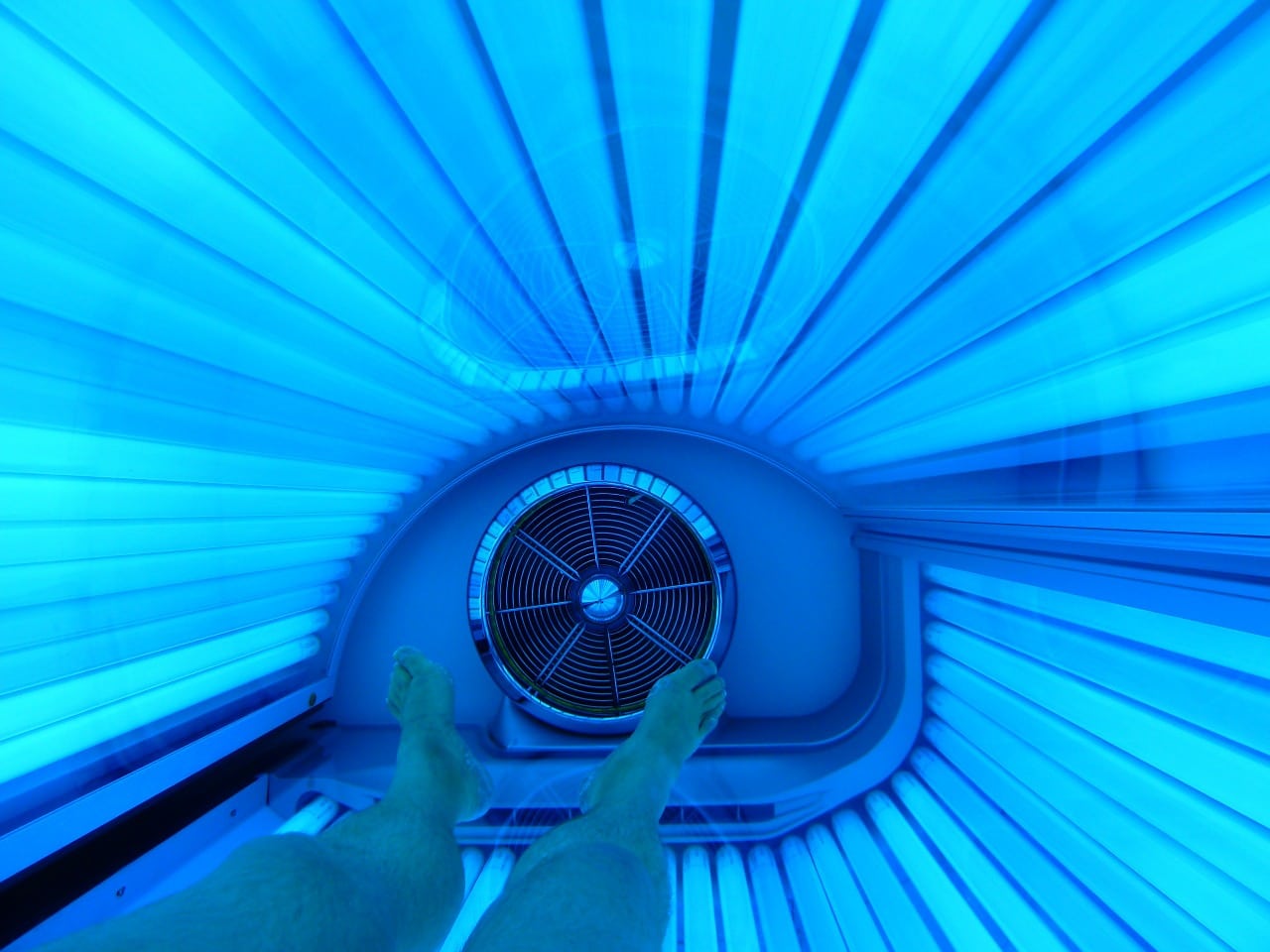As a courtesy to all of their current and prospective patients, Derick Dermatology would like to tell you about some of the risks associated with indoor tanning. Consider this scenario. Today is the day that you decided to get yourself a world-class tan at the local beach but the weatherman decided not to cooperate. It’s raining cats and dogs!
What should you do now? What are your options? You could wait until the weather clears or do what the American Academy of Dermatology reports that thirty-five percent of all American adults, fifty-nine percent of college students and seventeen percent of all teens have done, visit one of the local tanning salons located in almost every city and use a tanning bed or tanning booth to enhance your tan. There is even a home version of the tanning lamp or bed that you can purchase and use in the convenience of your own home.
No big deal, right? Jump in the car and head to the mall and go from pale to bronze with the flip of a switch. After all, if they have all of these tanning facilities and the government monitors everything else the public uses, they have to be safe, don’t they?
The answer to this question might just come as a rude awakening to anyone considering indoor tanning. Is it any coincidence that the American Academy of Dermatology is recording a greater increase in melanomas in women from seventeen to twenty-nine years of age than men in the same age bracket? Since women and young girls comprise the majority of tanning salon patrons, the link is both obvious and ominous.
Indoor tanning uses both types of ultraviolet rays, UVA and UVB, each of which can lead to skin damage and skin cancer with prolonged exposure. The evidence is mounting that this estimated 2.6 billion dollar industry in 2010, which has grown substantially every year, poses a potential risk to all of its users. It is more than just a case of “buyer beware.” It is more a matter of “is it really worth the risk?”
The U.S. Food and Drug Administration issued their own findings in 2014 that strengthened warnings for indoor tanning devices and made several recommendations, requiring users to be clearly informed about the risks involved with using tanning beds.
Among the FDA’s more telling recommendations was a suggested prohibition against the use of tanning beds by minors under the age of 18. Many states have already passed laws against their use by minors. This equipment has already been reclassified as medical devices that present “moderate to high risk” and must clearly advise users about their potential risks.
Cancer is not the only possible side-effect associated with the use of tanning equipment. The premature loss of your skin’s elasticity and wrinkles may be the long-term result of ultraviolet ray exposure requiring your Derick dermatologists’ expert assistance. The rays can also cause irreversible damage to your eyes. Some first time users learn that they are especially sensitive to UV radiation, developing rashes and other symptoms.
The FDA notes that “young people may not think they are vulnerable to skin cancer” but they don’t realize how great that risk can be. 68,000 people will be diagnosed with melanomas this year. For one out of every eight of these patients, it will prove fatal.
With little upside and significant downside, why take the risk? There is plenty of natural sunlight to go around. In moderation and with proper precautions, the sun will give you that golden tone that you are looking for. Your Derick Dermatologist will be happy to advise you about any potential concerns that you may have. Call them today and enjoy the sun.







